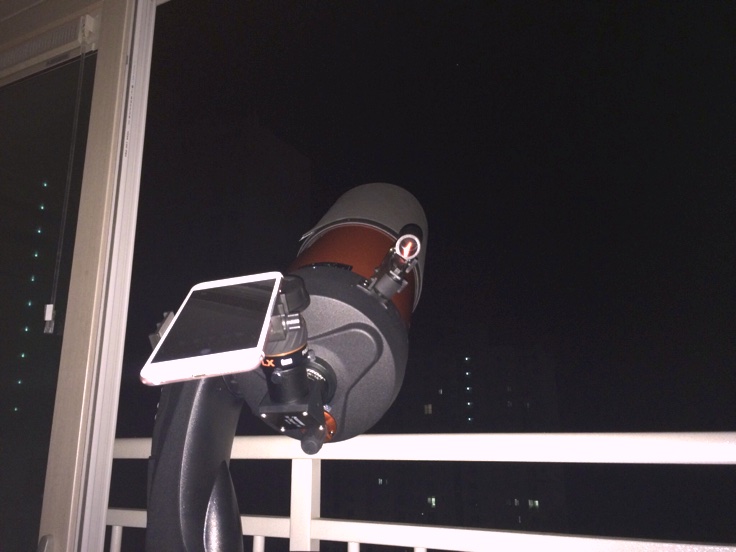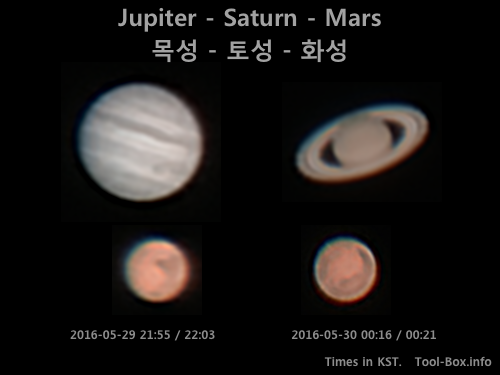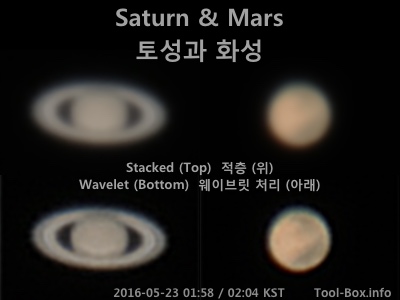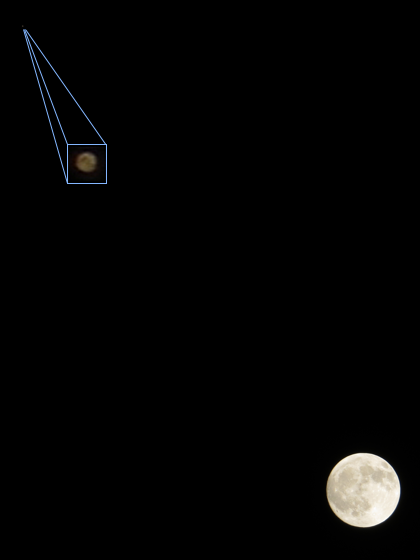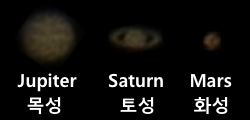Watching the rotation of Mars
Posted by Wesley on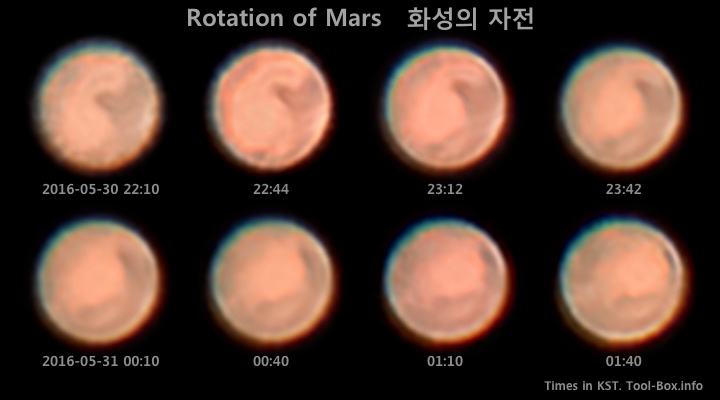
Mars photographed in 30-minute intervals on May 30 - 31, 2016 (200% size)
Mars rotates once every 24 hours and 37 minutes, so the look of the planet would visibly change as you keep an eye on the planet during the night. Owing to the fact that Mars is at its closest to Earth in more than ten years as I write this, this phenomenon had become relatively easy to photograph with my equipment. In fact, yesterday's post already illustrated this point.
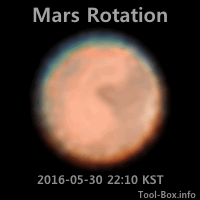 However, I wanted to see if this could be made into an animation. So I managed to take photos of Mars in 30-minute intervals in the span of 4 hours. I wanted to stay up longer, but practical considerations like sleep and humidity prevailed. As you can see at the top, I ended up with a total of eight frames after post-processing nearly 3,000 burst mode photos taken with my iPhone 6S Plus mounted on the telescope. They were then put together into GIF animation that you see on the left.
However, I wanted to see if this could be made into an animation. So I managed to take photos of Mars in 30-minute intervals in the span of 4 hours. I wanted to stay up longer, but practical considerations like sleep and humidity prevailed. As you can see at the top, I ended up with a total of eight frames after post-processing nearly 3,000 burst mode photos taken with my iPhone 6S Plus mounted on the telescope. They were then put together into GIF animation that you see on the left.The frames preserve the 2x digital zoom that I used while taking the photos because it allows you to discern the major features of Mars easier. The dark spot that sticks out on the right side of the planet in the first four frames is Syrtis Major Planum. The brighter area at the center of the planet in all the frames is Arabia Terra. Left side of the dark area just below the Arabia Terra is Meridiani Planum, where the Opportunity rover (MER-B) is currently operating (for more than 12 Earth years as of this writing). The dark area to the left of Arabia Terra visible on the last frame is Acidalia Planitia.
Telescope: Celestron NexStar 6SE + X-Cel LX 9mm eyepiece
Device: iPhone 6S Plus (afocal, 29mm - f/2.2 fixed)
Filters: Baader Moon & Skyglow
Location: Naju, Korea (time in KST)
Stacked with PIPP 2.5.6 and RegiStax 6.1.0.8
#1 (114 photos): ISO 200 - 1/25s @ 2016-05-30 22:10-22:11
#2 (116 photos): ISO 125 - 1/60s @ 2016-05-30 22:44-22:45
#3 (142 photos): ISO 100 - 1/50s @ 2016-05-30 23:12
#4 (130 photos): ISO 100 - 1/50s @ 2016-05-30 23:42
#5 (103 photos): ISO 100 - 1/50s @ 2016-05-31 00:10-00:11
#6 (106 photos): ISO 100 - 1/50s @ 2016-05-31 00:39-00:40
#7 (85 photos): ISO 100 - 1/50s @ 2016-05-31 01:09-01:10
#8 (118 photos): ISO 100 - 1/40s @ 2016-05-31 01:40
Defined tags for this entry: astronomy, Celestron NexStar 6SE, iPhone 6S Plus, Mars, planet, telescope
